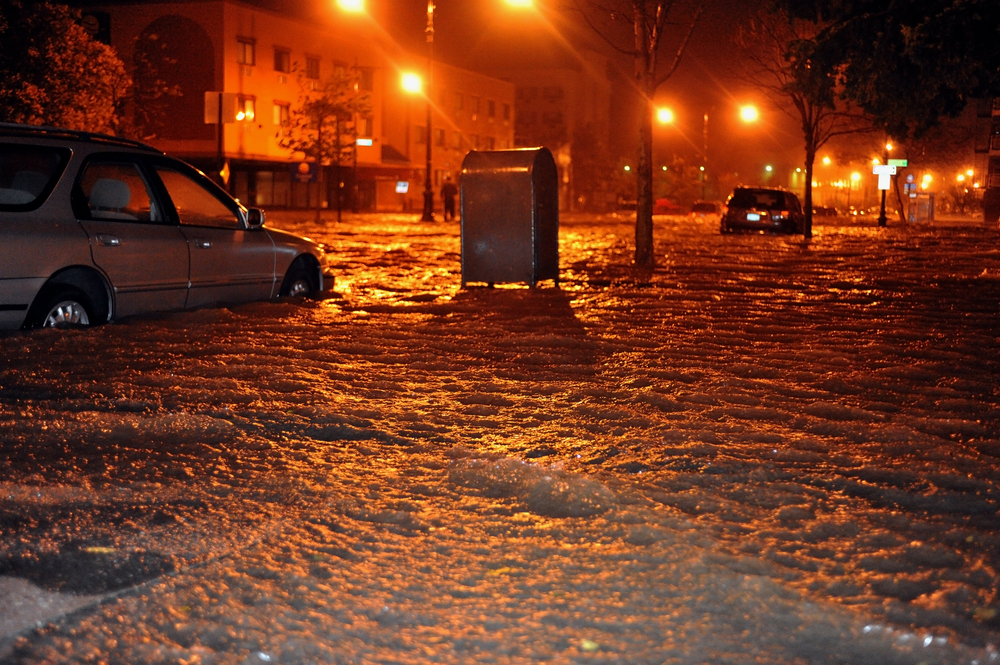Another day, another study warning that New York’s on the verge of plunging underwater.
It’s enough to make this Brooklyn-based blogger consider packing up and seeking higher ground.
The latest was published Monday in the journal Nature Climate Change, and it warns that America’s biggest coastal cities are at a much greater risk of flooding than previously believed. To get there, researchers took two different threats — heavy rainfall and storm surges — that are typically considered separately, and looked at what can happen when they hit simultaneously. It’s a phenomenon, they found, that in many places — specifically along the Atlantic and Gulf coasts — is happening a lot more often than it did in the past. To take the example given in the study, New York City’s chances of flooding under such conditions have more than doubled over the past 60 years.
What can emerge, the researchers say, is a perfect storm of the likes of Hurricane Isaac, which hit New Orleans in 2012. While weaker than the infamous Katrina, Isaac blew in with a surge that raised sea levels somewhere between 6 and 9 feet; the rain that then fell, having nowhere to go, lead to rapid, heavy flooding that caught nearly everybody by surprise. New York’s Hurricane Sandy, in contrast, was an anomaly, as the flooding that ensued was caused solely by a storm surge, with relatively light rainfall. That natural disaster was bad enough — extreme rainfall would likely have worsened the damage considerably.
In a nutshell, it’s bad news — and the trouble is compounded yet again when rising sea levels are added to the equation.
“Call it a triple threat,” study author Steven Meyers, a scientist at the University of South Florida, told the Guardian. “What this shows is that there is an increasing risk of compound flooding, from storm surge and rainfall at the same time.”
The researchers aren’t quite ready to point fingers at human activity, though it’s important to note that all three of the phenomenons described are made more likely by climate change. The main takeaway, according to the researchers, is that those living in coastal areas — that’s about 40 percent of the U.S. population — need to start paying more attention to, and hopefully preparing for, the growing flood risk.

